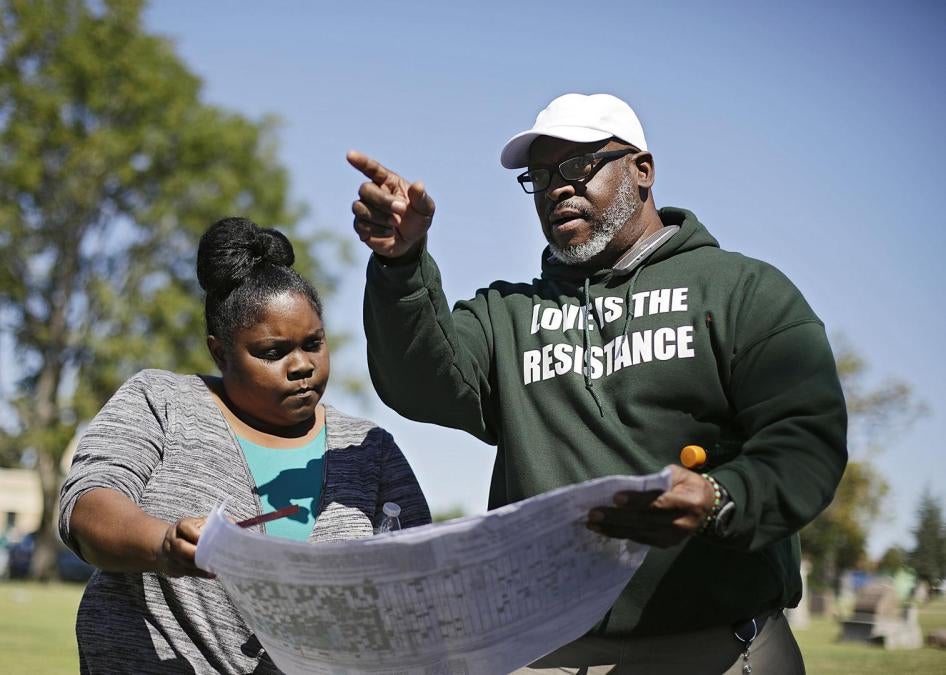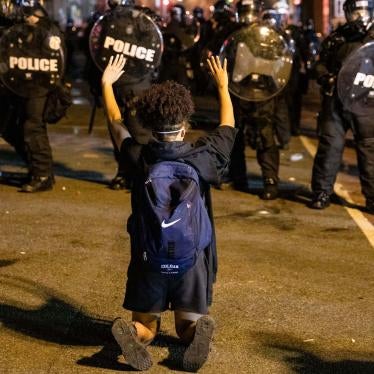The City of Tulsa, Oklahoma on Monday restarted a dormant investigation into the existence of possible mass graves where victims of the 1921 Tulsa Race Massacre may lie. Investigators were set begin excavation in one of three initial sites earlier this year, but postponed due to the Covid-19 pandemic.
The search is a critical step toward reckoning with one of the worst incidents of racial violence in US history. In the span of about 24 hours on May 31 and June 1, 1921, a white mob, including members deputized by city officials, burned down Tulsa’s Greenwood community, a prosperous Black neighborhood then known as “Black Wall Street.” The destruction left thousands of Black Tulsans displaced. An estimated 300 people, the vast majority Black, were killed, but the exact number remains unknown.
In May, Human Rights Watch released a report describing how in the decades since the 1921 massacre, city officials obstructed Greenwood’s rebuilding, and government policies, including abusive policing practices, have prevented Black people in Greenwood and the broader North Tulsa community from thriving. Tulsa also failed to investigate the existence of mass graves, something the “Tulsa Race Riot Commission,” created by the Oklahoma legislature in 1997, recommended in 2001.
A limited investigation into the mass graves started in 1998 but was discontinued. In 2018, a Washington Post report on unresolved questions surrounding the massacre and the failure to investigate the existence of mass graves prompted Tulsa Mayor G.T. Bynum to announce he would reopen the inquiry. In December 2019, forensic scientists detected anomalies consistent with mass graves in at least two of three locations that had previously been identified as potential sites. These included Oaklawn Cemetery, where Monday’s investigation broke ground.
Unearthing the buried truth by recovering and identifying remains could offer one important element of reparatory justice that is long overdue. But it is only one of many steps the city of Tulsa and state of Oklahoma need to take to address the massacre, the failure to account for it, and the impact of subsequent discriminatory policies that continue to harm Tulsa’s Black community today.









